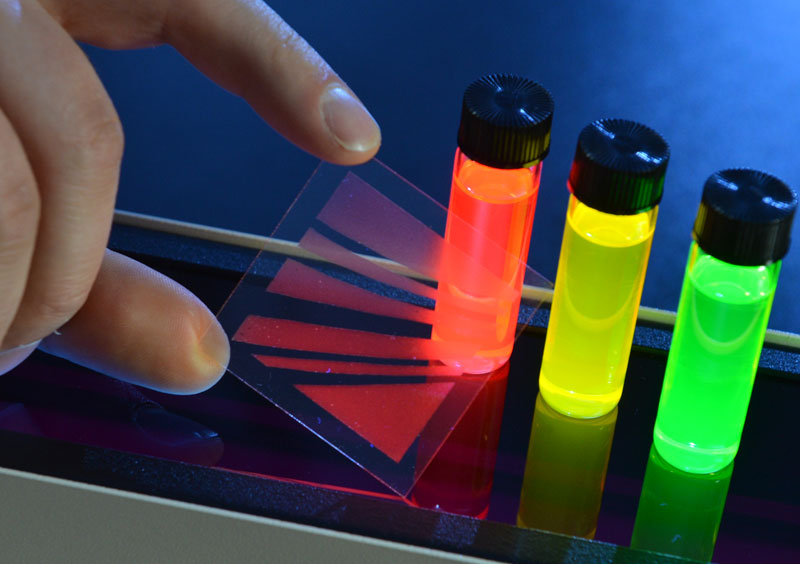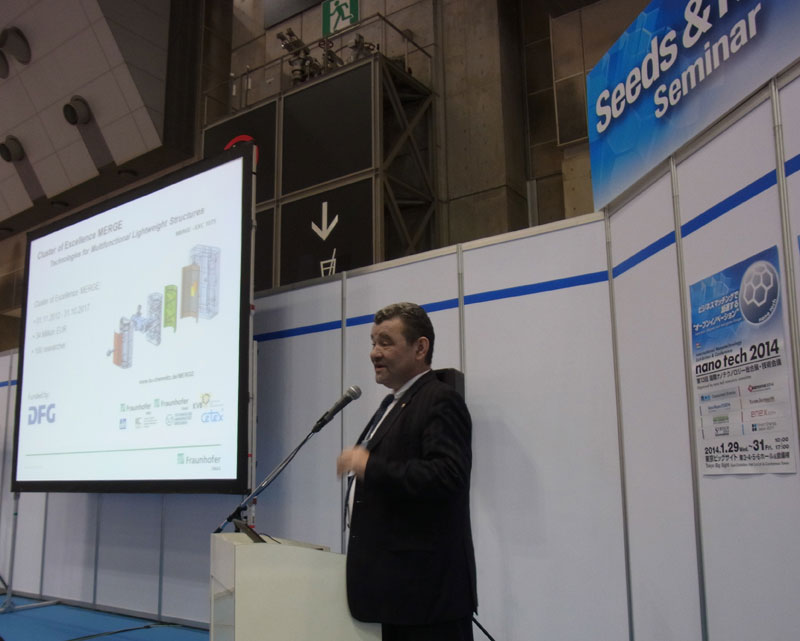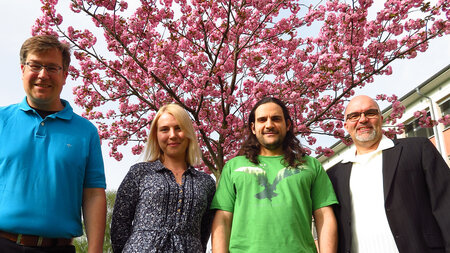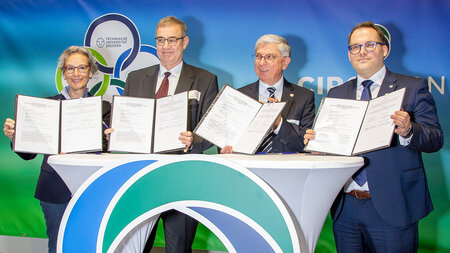-

In his presentation in Tokyo Prof. Dr. Thomas Gessner is focusing on the integration of sensors and actuators in hybrid structures, which are an object of the cluster of excellence merge of TU Chemnitz. The picture shows a sample which is coated with quantum dots (nanoscale semiconductor particles). If the tiny semiconductor particles are stimulated with UV light, they start to fluoresce. The color of the emitted light depends on the size of the particles. If the material at some parts is affected by tension, the fluorescence stops. Therefore, the affected parts remain dark after excitation by UV light and indicate the mechanical load. Picture: Hendrik Schmidt -

Prof. Gessner presented ressource efficient innovations based on nano technologies at the Seeds & Needs Seminar (B) on January 30th. Picture: Jörg Frömel
Researchers from Chemnitz present results in Japan
Researchers from Chemnitz and Sendai present together from 29 to 31 January 2014 at the nano tech in Tokyo results for the SLID bonding method
Chemnitz researchers of the Fraunhofer Institute for Electronic Nano Systems ENAS and the Technische Universität Chemnitz attend the world`s largest nanotechnology exhibition in Tokyo. Together with the Fraunhofer Project Center "NEMS/MEMS Devices and Manufacturing Technologies at Tohoku University" from Sendai, the scientists show research results on the so called Solid-Liquide Interdiffusion Bonding (SLID Bonding) at wafer level. This packaging technology is already established at chip and component level. Now it is also applied for wafer level packaging of MEMS (micro-electro-mechanical systems) and 3D integration. SLID bonding has some advandages. The process temperatures are less than 300 degree Celsius. Furthermore hermetical encapsulation of MEMS and electrical conductivity can be reached by using this packaging technology.
SLID bonding is realized by a short liquid phase of one low melting metal and the immediate solidification caused by diffusion and intermixing with a second, high melting metal (Solid-Liquid Interdiffusion - SLID). Deposition of layers and layer systems as well as the right bonding partners inclusively surface pretreatment are important for the realization of a SLID bonding process. The German researchers of Fraunhofer ENAS and Technische Universität Chemnitz cooperate with partners of the Tohoku University in Sendai, Japan, since several years. In 2012, the Fraunhofer Project Center "NEMS/MEMS Devices and Manufacturing Technologies at Tohoku University" was established to realize joint research and development, training and technology transfer. Directors of the project center are Prof. Dr. Thomas Gessner, director of Fraunhofer ENAS and the Center for Microtechnologies at the TU Chemnitz, as well as Prof. Dr. Masayoshi Esashi and Prof. Dr. Shuji Tanaka from the Tohoku University in Sendai.
Prof. Gessner will present ressource efficient innovations based on nano technologies at the Seeds & Needs Seminar (B) on January 30th. For the first time, he will show results obtained within the cluster of excellence merge of the TU Chemnitz. The main object of the cluster is the fusion of fundamental technologies suitable for the resource-efficient massproduction of lightweight structures of high-performance and functional density. In order to make the structures much more intelligent, microsystems, smart sensors, actuators and electronics will be integrated. In his presentation Prof. Gessner is focusing on the integration of sensors and actuators in hybrid structures for structural health monitoring and the development and manufacturing of foil-based touch-sensitive sensors based on composites.
(Source: Fraunhofer ENAS)
Katharina Thehos
29.01.2014





